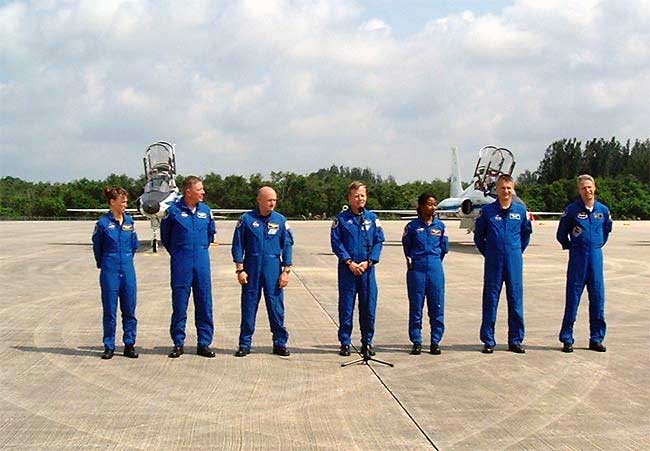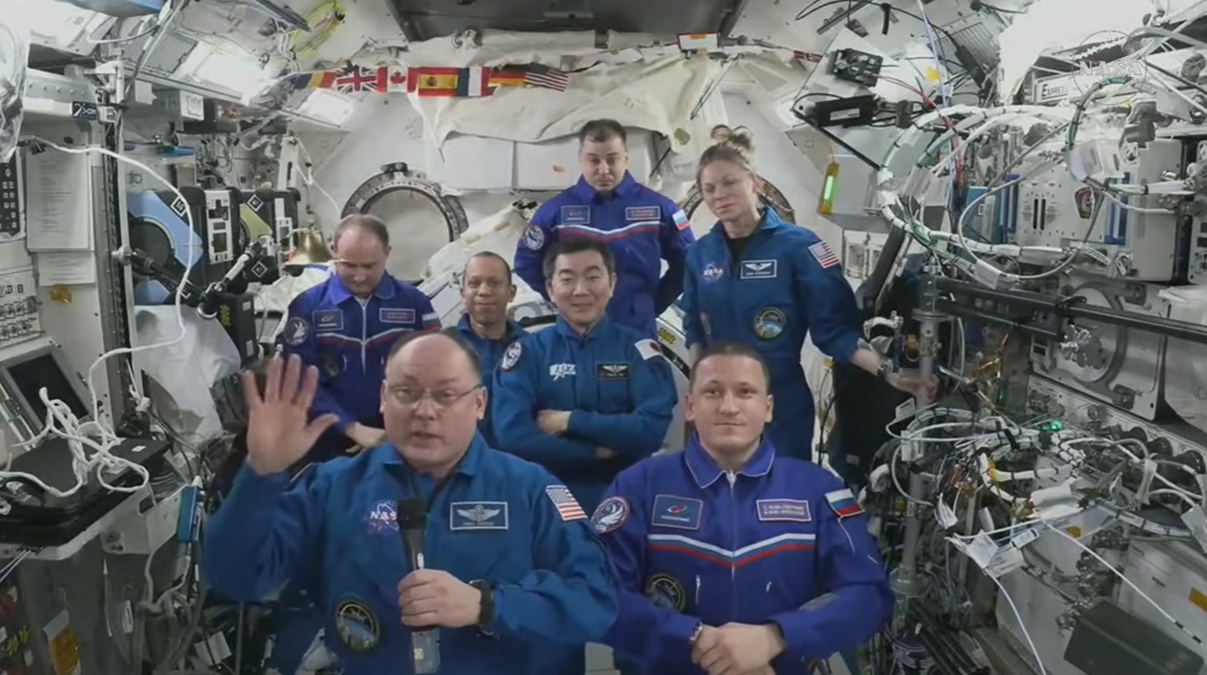STS-121 Astronaut Crew Arrive at NASA Spaceport

CAPECANAVERAL, Fla. - The seven astronauts set to ride NASA's space shuttleDiscovery into orbit later this week arrived at their launch site Tuesdayeagerly awaiting a July 1 space shot.
The STS-121astronauts, commanded by shuttle flight veteran StevenLindsey, arrived here at NASA's Kennedy Space Center (KSC) in separate T-38jets from the Houston, Texas, where they have trained for their spaceflight atthe agency's Johnson Space Center. The shuttlemission will mark NASA's second orbiter test flight since the 2003 Columbia accident.
"We'rereally excited to be here and ready to go do this for real," Lindsey said toreporters at KSC's Shuttle Landing Facility, where heand his crewmates parked their NASA aircraft by 10:30 a.m. EDT (1430GMT). "We're prepared as we're going to be."
Lindsey andhis STS-121 crewmates - pilot MarkKelly, mission specialists Michael Fossum, LisaNowak, Stephanie Wilson, Piers Sellers and European Space Agency (ESA)astronaut Thomas Reiter - will ride Discovery on a two-day trip to theInternational Space Station (ISS). In addition to testing shuttle inspectionand repair methods, the astronauts will also deliver fresh supplies to the ISSalong with Reiter, who will join the space station's Expedition 13 crew alreadyonboard.
"Afteryears and years of training, I think this is a remarkable moment, coming closeto launch," said Reiter, who will be ESA's firstlong-duration astronaut - and the first non-U.S. or Russian crewmember - toserve an extended term aboard the space station.
NASA'sSTS-121 mission comes after the space agency's first post-Columbia shuttleflight, the STS-114 spaceflightalso aboard Discovery, which launchedto the ISS in July 2005. Discovery's launch system has undergone a series of modificationsto reduce the risk to astronauts.
The mostnoticeable change is the removalof a problematic foam ramp from Discovery's external tank, which engineersculled to reduce the risk of large pieces of foam insulation falling from thefuel tank and damaging the orbiter.
Breaking space news, the latest updates on rocket launches, skywatching events and more!
During theSTS-114 launch, large pieces of foam fellfrom the ramp during the orbiter's ascent but did not strike the orbiter. Asimilar problem critically damaged the Columbia orbiter during liftoff,breaching its heat shield and leading to its destruction - and the loss of theshuttle's seven-astronaut crew - during reentry.
"Discoveryis ready to go and we're ready to go as well," Kelly told reporters."Hopefully, we'll have some great weather Saturday."
- Meet the STS-121 Crew: The Flyers
- STS-121 Launch Dissent Stemmed From Risk to Shuttle, Not Astronauts
- Return to Flight: NASA's Road to STS-121
- The Great Space Quiz: Space Shuttle Countdown

Tariq is the award-winning Editor-in-Chief of Space.com and joined the team in 2001. He covers human spaceflight, as well as skywatching and entertainment. He became Space.com's Editor-in-Chief in 2019. Before joining Space.com, Tariq was a staff reporter for The Los Angeles Times covering education and city beats in La Habra, Fullerton and Huntington Beach. He's a recipient of the 2022 Harry Kolcum Award for excellence in space reporting and the 2025 Space Pioneer Award from the National Space Society. He is an Eagle Scout and Space Camp alum with journalism degrees from the USC and NYU. You can find Tariq at Space.com and as the co-host to the This Week In Space podcast on the TWiT network. To see his latest project, you can follow Tariq on Twitter @tariqjmalik.
